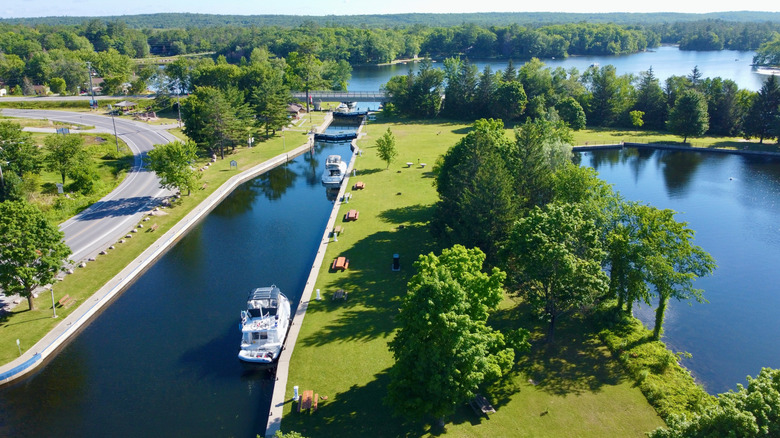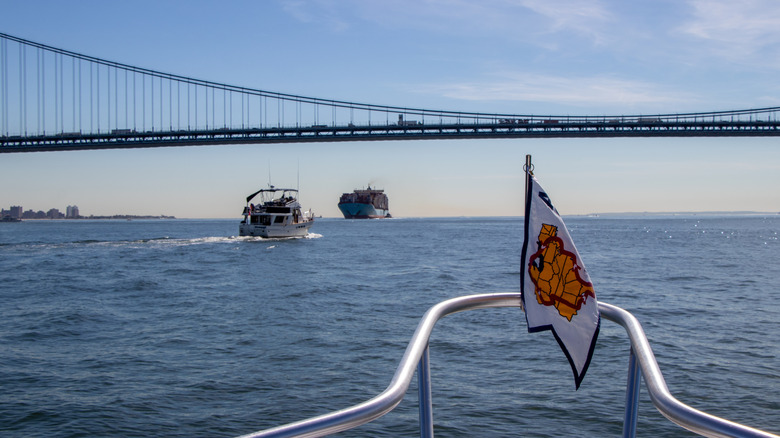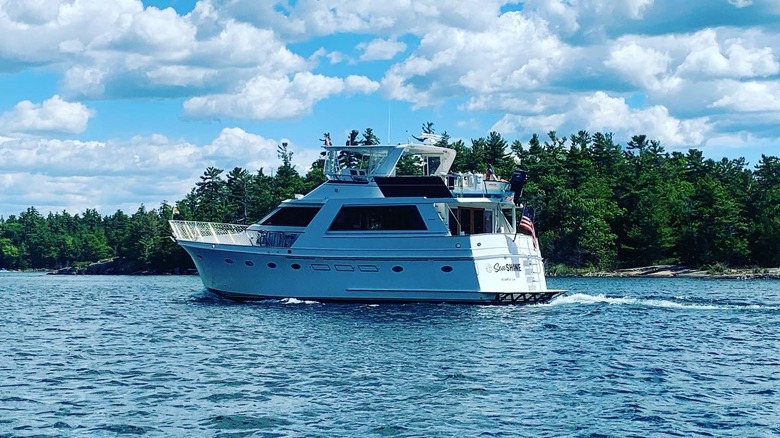America's Secret Bucket List-Worthy Boating Adventure Offers An Incredible Way To Explore The Eastern US
What's your dream multi-month adventure? For some, an RV means the freedom to roam from state to state, exploring every national park and every road trip they've ever wanted to take. Others want to see tropical islands and historic port cities by cruise ship. But did you know that there's a way to combine the two? If you've ever dreamed of being your own captain on the high seas, the Great Loop might be for you.
America's Great Loop is a series of connected waterways that circle the entire eastern half of the U.S., with possible side trips to parts of Canada and the islands of the Bahamas. From famous port cities like Key West, Savannah, Charleston, and Baltimore, the Great Loop includes historic places as well as spots of exceptional natural beauty. Boaters can choose not only where they stop, but also how long they want to stay. Imagine piloting your boat past the Statue of Liberty or anchoring for a quiet night under the stars while visiting little-known Georgia islands full of hiking and beaches.
As with an RV, your boat will be your home for this adventure, so you'll need one big enough to comfortably live on for months at a time. Some travelers break the trip into segments, leaving the boat in a secure marina while they travel home or visit family. Others dive full into the boating lifestyle, staying on the boat while doing the entire Loop in one long adventure. Nights on the Loop are usually divided between staying at marinas while exploring towns and spending the night at anchor while enjoying the tranquility of quiet coves.
Set sail on America's Great Loop
According to the American Great Loop Cruisers Association (AGLCA), the Great Loop is a journey that is at least 5,200 miles long. But there are forks in the road and paths less traveled, so many Loopers put more miles under their keel than that. At a minimum, the route includes the East Coast's Intracoastal Waterway, parts of the New York canal system, the Great Lakes, and the rivers south to the Gulf. But some boaters opt to see more. For example, by adding an extra season in New England, you could complete the Down East Circle Loop, a side trip from New York City, along the Hudson and St Lawrence Rivers, around Prince Edward Island and Nova Scotia, and back by way of Maine and the New England coast.
The route follows primarily inland and protected waterways, rarely leaving sight of land. A few sections require passages in open water, such as along New Jersey and parts of the Gulf of Mexico. You can make more offshore jumps if you like — many Loopers even spend a few months cruising the Bahamas, an ultimate destination for boating adventures.
The Loop has a culture and social aspect, which is many boaters' favorite part. Impromptu meetups, potlucks, and "dock-tails" are the norm as you meet like-minded crews. Loopers join the AGLCA and identify themselves with burgees (flags). White burgees identify a Loop in progress, while gold denotes that you've completed one full circuit, and platinum means two or more trips. Yes, some people enjoy the journey so much they refuse to stop, going around again to see the things they missed the first time. In recent times, just under 300 boats complete the Loop every year.
Details make the trip of a lifetime
Of course, the devil of a trip like this is in the details. Picking the right boat goes a long way. So too does getting on-the-water training from a knowledgeable captain, who can teach all crew members how to operate their boat with confidence. No one type of boat is perfect for the Loop; the only hard limits come from bridge clearances. Even sailboats have done the Loop, but they have to remove their masts for sections of the canals and rivers. The most typical Looper boat is a fuel-efficient trawler, usually about 40 feet long. But people have completed the Loop on everything from jet skis to 94-foot motor yachts.
One thing about boating is that your life becomes dependent on the weather. To avoid rough passages and maximize fun, carefully plan your trip according to weather patterns. For your overall Loop, you'll want to be in the north (New York and the Great Lakes) during the summer, and in Florida or the Bahamas during the winter. But, on a day-to-day basis, you've also got to check the weather forecast, traveling only during periods of fair weather for a comfortable ride. This can mean you're occasionally stuck exploring a new place for a few days longer than planned, but that's just part of the adventure.
Pace is another personal choice. The AGLCA says that most Loopers average 50 miles a day when they're moving, but also only average moving on one out of every three days. The Loop is not for rushing — it's a slow-paced adventure about experiencing life in the places you visit. The Loop is much more than a trip; it's a lifestyle.


